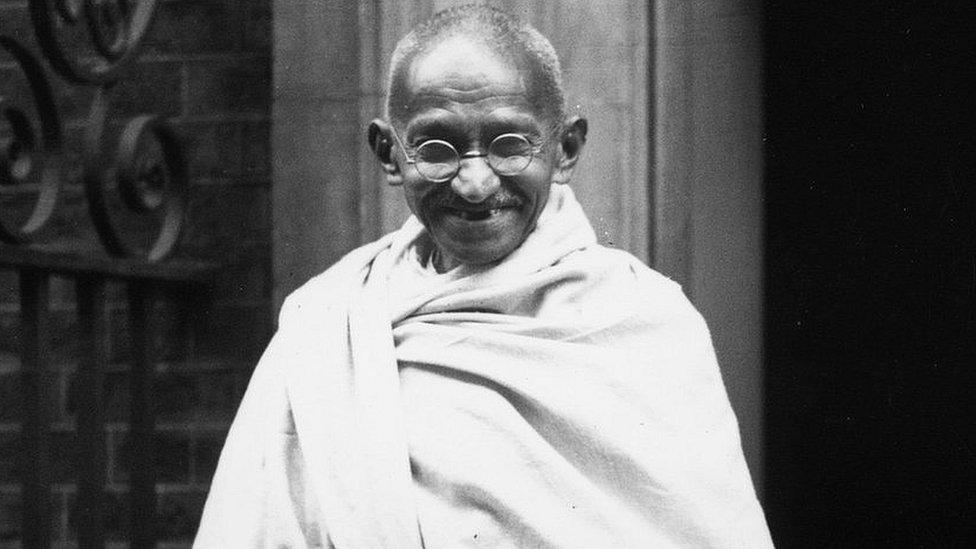Manchester Mahatma Gandhi statue unveiled
- Published
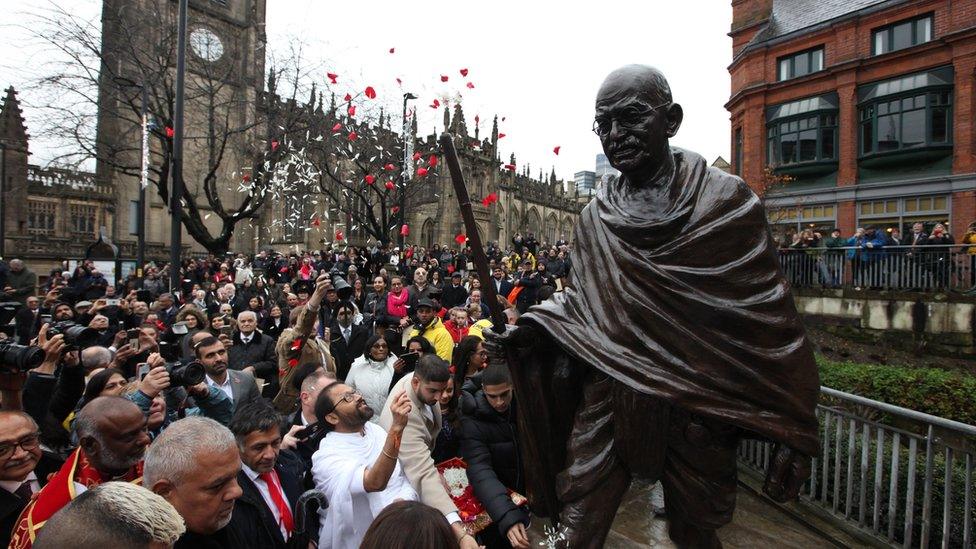
Gandhi visited Manchester in 1931 as part of a journey to see mill workers in the region
A statue of Indian independence icon Mahatma Gandhi has been unveiled in Manchester.
The 9ft (2.75m) bronze tribute was designed by artist Ram V Sutar, and revealed in front of political and religious leaders.
The statue marks the 150th anniversary of Gandhi's birth in 1869 and was installed outside the city's cathedral.
It is also intended to celebrate Manchester's "multi-cultural and multi-faith" society, organisers said.
Gandhi had visited Manchester on his way to see mill workers in Lancashire in 1931.
However, the plans were previously met with criticism from some who claimed Gandhi had shown "well-documented racism".
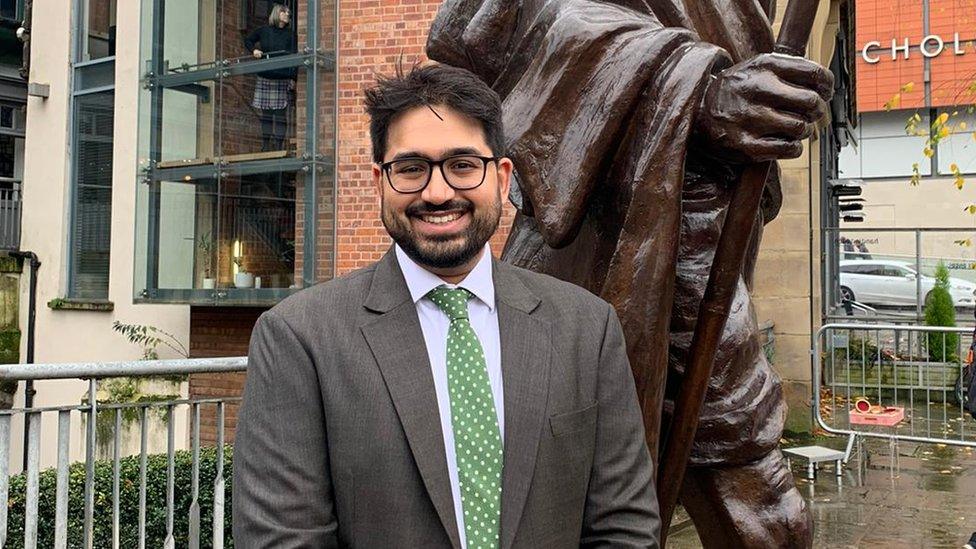
Aadit Virani helped to organise plans for the statue
Crowds gathered in the rain to watch the unveiling, which was accompanied by performances from the University of Manchester Indian Dance Society and The Indian Choir of England, among others.
A service at the cathedral also featured readings, poetry and songs.
The statue was given to the city by the Shrimad Rajchandra Mission Dharampur (SRMD), a worldwide spiritual movement.
Organiser Aadit Virani said: "The main reason for having the statue in Manchester is to share in the multi-faith and multi-cultural city that is Manchester.
"It's a direct response to the [Manchester Arena attack] that happened in 2017, to show that love and compassion can always overcome hatred."
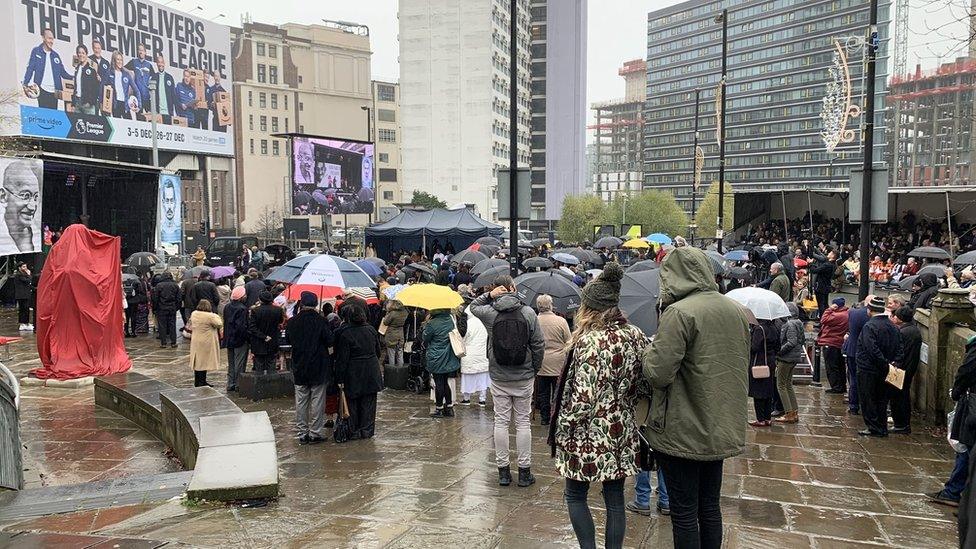
Crowds gathered in the rain to watch the statue's unveiling
Student activists were among those who have criticised the project.
They demanded an apology from Manchester City Council, citing what they described as "vile comments" from Gandhi, and his "well-documented anti-black racism".
In an open letter, they said he had referred to Africans as "savages", "uncivilised" and "dirty", comments which were "well documented throughout his earlier correspondence and writings".
A council spokeswoman said the statue was intended "to spread a message of peace, love and harmony".
- Published17 July 2019
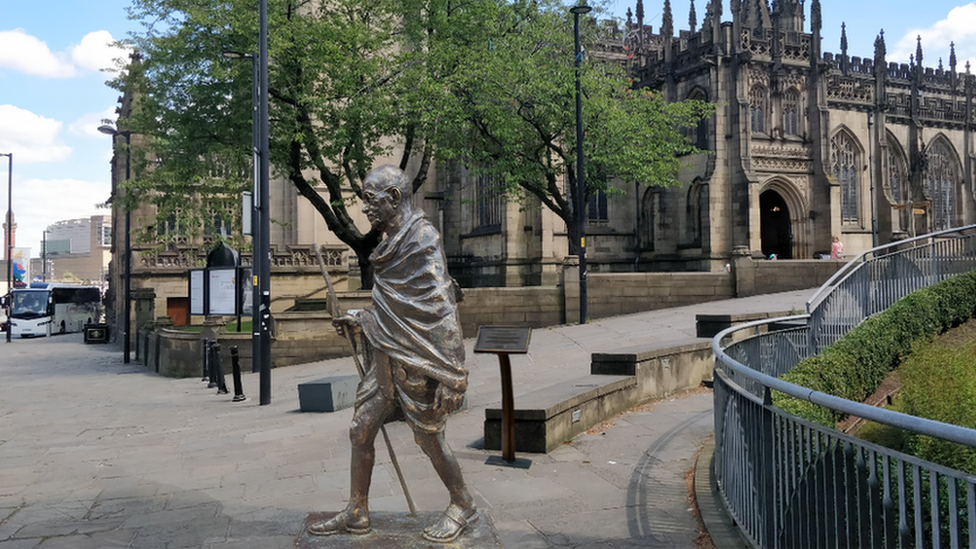
- Published16 October 2019
